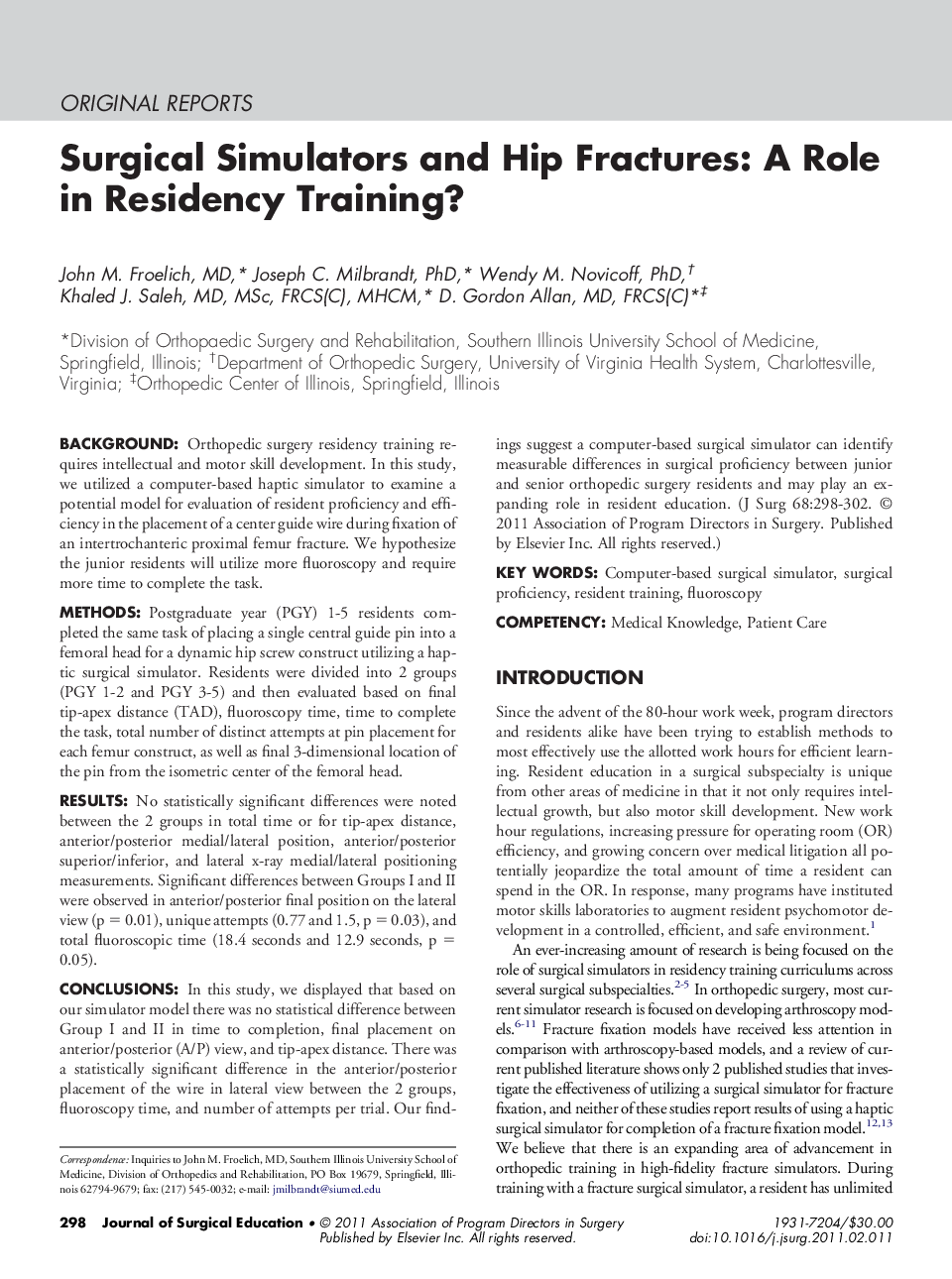| کد مقاله | کد نشریه | سال انتشار | مقاله انگلیسی | نسخه تمام متن |
|---|---|---|---|---|
| 4298224 | 1288346 | 2011 | 5 صفحه PDF | دانلود رایگان |

BackgroundOrthopedic surgery residency training requires intellectual and motor skill development. In this study, we utilized a computer-based haptic simulator to examine a potential model for evaluation of resident proficiency and efficiency in the placement of a center guide wire during fixation of an intertrochanteric proximal femur fracture. We hypothesize the junior residents will utilize more fluoroscopy and require more time to complete the task.MethodsPostgraduate year (PGY) 1-5 residents completed the same task of placing a single central guide pin into a femoral head for a dynamic hip screw construct utilizing a haptic surgical simulator. Residents were divided into 2 groups (PGY 1-2 and PGY 3-5) and then evaluated based on final tip-apex distance (TAD), fluoroscopy time, time to complete the task, total number of distinct attempts at pin placement for each femur construct, as well as final 3-dimensional location of the pin from the isometric center of the femoral head.ResultsNo statistically significant differences were noted between the 2 groups in total time or for tip-apex distance, anterior/posterior medial/lateral position, anterior/posterior superior/inferior, and lateral x-ray medial/lateral positioning measurements. Significant differences between Groups I and II were observed in anterior/posterior final position on the lateral view (p = 0.01), unique attempts (0.77 and 1.5, p = 0.03), and total fluoroscopic time (18.4 seconds and 12.9 seconds, p = 0.05).ConclusionsIn this study, we displayed that based on our simulator model there was no statistical difference between Group I and II in time to completion, final placement on anterior/posterior (A/P) view, and tip-apex distance. There was a statistically significant difference in the anterior/posterior placement of the wire in lateral view between the 2 groups, fluoroscopy time, and number of attempts per trial. Our findings suggest a computer-based surgical simulator can identify measurable differences in surgical proficiency between junior and senior orthopedic surgery residents and may play an expanding role in resident education.
Journal: Journal of Surgical Education - Volume 68, Issue 4, July–August 2011, Pages 298–302